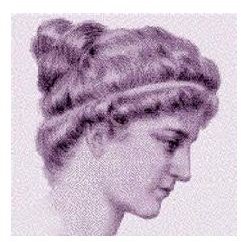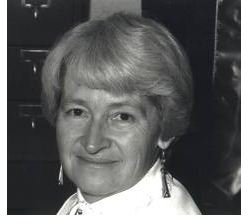Famous Female Astronomers - a List and Description
Women Astronomers
Women have made many very important discoveries in astronomy, from calculating the vast distances to remote galaxies to discovering hundreds of asteroids and comets. They have been a driving force in astronomy since 400 AD. This is a list of famous female astronomers. Many have links to further information.
A Few Women at the Forefront of Astronomy Today
-
Dr. Debra Fischer is a planet-hunter and professor of astronomy at San Francisco State University. She searches for planets orbiting around distant stars. The method of research she uses to discover distant planets is to look for their small gravitational effect on the star they orbit. This is called the Doppler technique.
-
Carolyn Shoemaker hunts for comets. She has discovered more comets than anyone else that is still alive, totaling 32 in all.
Shoemaker has also discovered 800 asteroids. She carried out much of her work in California during the Palomar Asteroid and Comet Survey. She discovered her first comet in 1983. Later, she became affiliated with the Lowell Observatory in Flagstaff, Arizona. She is very well known as the co-discoverer of the Shoemaker-Levy 9 comet that collided with Jupiter in 1994.
-
Dr. Jill Tarter is director of the Center for Search for Extraterrestrial Intelligence (SETI), a private organization which uses radio astronomy to search for alien signals to confirm that intelligent life exists elsewhere in our Universe.
Women Astronomers in History
Hypatia of Alexandria is the first known woman astronomer, and was also a mathematician and inventor, as well as a philosopher.

She was born during the late fourth century. She was educated by her father, who was also a mathematician, astronomer, and philosopher. She wrote books on mathematics and astronomy.
Caroline Herschel was born in England in 1750 and was the first woman to discover a comet. She also discovered several nebulae. Her discoveries led the King to award her an annual stipend of 50 Pounds, making her the first woman in England to be a paid civil servant.
Maria Mitchell was born in 1889 and was the first professional American astronomer. She became a professor of astronomy at Vassar College.
Williamina Fleming was born in 1857 and worked at Harvard Observatory. She created a system used to classify the frequencies of light (spectral analysis) from stars. She also discovered 59 nebulae and 10 novas.
Annie Jump Cannon was born in 1863 and also worked at the Harvard Observatory. She improved on the spectral analysis system developed by Fleming making it much more detailed; we still use the system she devised. She also created a catalog of more than 300,000 variable stars that is still in use today.
Henrietta Leavitt, born in 1868 worked at Harvard as well. She devised a system that enabled astronomers to determine how far away certain stars (Cepheid Variables) are as well as how far away the galaxies are that those stars are in. She in effect provided the ground work on Cepheid variable stars that Edwin Hubble used to determine the distance to the Andromeda Galaxy, which greatly expanded our perception of how big our Universe really is.
Cecilia Payne-Gaposchkin was born in 1900. She worked at Harvard and discovered a relationship between a star’s temperature and its light spectrum. She was the first woman given the Chair in Astronomy position at Harvard University
Vera Rubin, born in 1928, challenged many accepted theories in astronomy and disproved some of them, changing forever the way we perceive our Universe. She originated the theories on dark matter in the Universe.
Jocelyn Bell Burnell discovered pulsars while completing her doctoral thesis in radio astronomy at Cambridge University. She was born in 1943. https://www.brighthub.com/science/space/articles/8937.aspx
Unknown Female Astronomers

Many of the prehistoric cultures were matriarchal societies based on communion with the Earth Mother. No doubt some of the astronomers who planned and used such astronomical observatories, such as Stonehenge in England, were women. They would add great numbers to the list of famous female astronomers.
Resources
The Woman Astronomer. Women Astronomers, https://www.womanastronomer.com/women_astronomers.htm
University of Maryland. Questions and Answers about Women in Astronomy, https://www.astro.umd.edu/~miller/teaching/questions/women.html
Astronomical Society of the Pacific. Women in Astronomy: An Introductory Resource Guide to Materials in English, https://www.astrosociety.org/education/resources/womenast_bib.html
Photo credits: photo of Carolyn Shoemaker courtesy of the United States Geological Survey (USGS). Photo of Hypatia of Alexandria courtesy of NASA.
